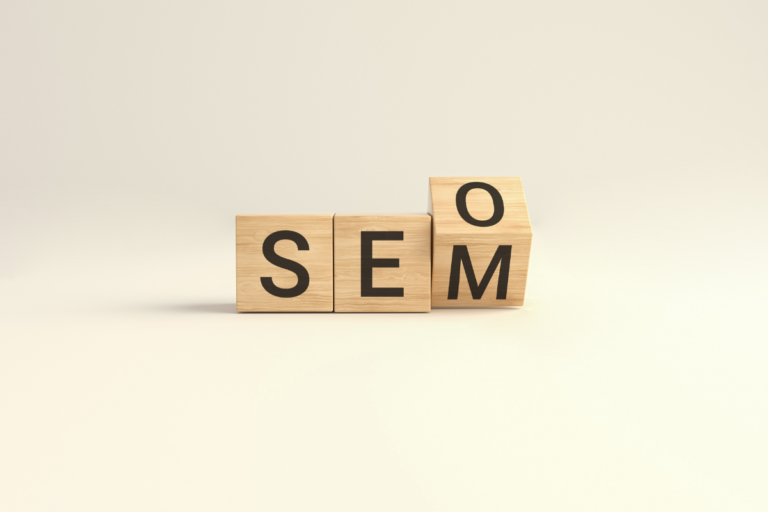In the ever-evolving landscape of digital marketing, two crucial strategies stand out: SEO (Search Engine Optimization) and SEM (Search Engine Marketing). Both SEO and SEM play vital roles in improving online visibility and driving targeted traffic to websites. Understanding the differences between the two approaches and how they can work together is crucial for making informed decisions about which strategy is best suited for your project. In this article, we will explore the concepts of SEO and SEM, highlight their differences, and discuss how they can complement each other to achieve optimal results.
What is SEO and SEM?
Search Engine Optimization (SEO):
SEO is a set of strategies and techniques aimed at improving a website’s visibility and organic (non-paid) ranking in search engine results pages (SERPs). The primary goal of SEO is to increase the quality and quantity of organic traffic by optimizing website content, structure, and user experience. SEO involves various elements such as keyword research, on-page optimization, link building, and technical optimization to enhance a website’s search engine friendliness.
Search Engine Marketing (SEM):
SEM, on the other hand, refers to paid marketing efforts that aim to increase a website’s visibility in search engine results through paid advertising. It involves the creation and management of targeted ads that appear alongside organic search results. SEM typically utilizes pay-per-click (PPC) advertising models like Google Ads, where advertisers bid on keywords relevant to their target audience. By paying for clicks, SEM allows businesses to drive immediate traffic to their websites.
Difference between SEO and SEM:
While both SEO and SEM contribute to enhancing a website’s visibility on search engines, there are fundamental differences between the two approaches.
- Traffic Acquisition:
SEO focuses on organic search traffic, where users find websites through unpaid search engine results. It aims to improve a website’s visibility in SERPs by optimizing content and website elements.
SEM, on the other hand, relies on paid advertising to drive traffic. Advertisers bid on keywords relevant to their business, and their ads appear at the top or bottom of search engine results. The advertiser pays only when a user clicks on the ad.
- Cost:
SEO is a long-term strategy that requires ongoing efforts but doesn’t incur direct costs for ranking organically. While it may take time to see results, the benefits of SEO can be long-lasting.
SEM involves direct costs as advertisers pay for clicks on their ads. The cost per click (CPC) depends on the competitiveness of the keywords and the quality of the ad campaign. SEM can provide immediate visibility and traffic but requires continuous investment to sustain results.
- Click-Through Rates (CTR):
In terms of click-through rates, SEO tends to have higher CTRs compared to SEM. Organic search results are seen as more credible and trustworthy by users, leading to higher click-through rates.
SEM ads, while prominently displayed, are labeled as ads, and some users may be wary of clicking on them. However, SEM can still generate substantial traffic and conversions, especially for specific marketing campaigns or time-sensitive promotions.
How do SEO and SEM work together?
Although SEO and SEM have distinct approaches, they can work synergistically to maximize results and achieve marketing goals.
- Keyword Insights:
SEM campaigns provide valuable keyword data that can inform SEO strategies. By analyzing the performance of paid keywords, businesses can identify high-converting keywords to target through organic SEO efforts. This integration allows for a more data-driven approach to optimizing website content.
- Comprehensive Search Presence:
By combining SEO and SEM, businesses can dominate the search engine results page with both organic listings and paid ads. This increases visibility, improves brand recognition, and establishes credibility among users, as a strong presence across both organic and paid search results signals authority and trustworthiness.
- Performance Optimization:
Analyzing the performance metrics of both SEO and SEM campaigns provides valuable insights for optimization. By monitoring keyword rankings, click-through rates, and conversion rates, businesses can refine their strategies and allocate resources more effectively.
Conclusion:
In the battle of SEO vs. SEM, there is no definitive answer as to which strategy is better for every project. The choice depends on various factors, including budget, goals, timeline, and competition. SEO focuses on long-term organic growth, while SEM provides immediate visibility through paid advertising. However, integrating SEO and SEM can result in a powerful marketing approach that leverages the strengths of both strategies.
For businesses seeking comprehensive SEO and SEM services, partnering with an experienced agency can be immensely beneficial. These agencies can provide expert guidance, keyword research, campaign management, and performance analysis to help businesses achieve their digital marketing objectives effectively and efficiently.
Remember, every project is unique, and understanding the intricacies of SEO and SEM will empower you to make informed decisions that align with your business goals.



